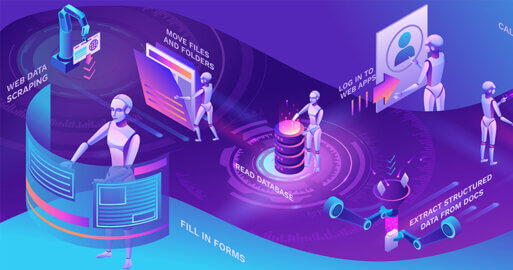Digital Integration with State-Of-The-Art Platform Technology by SEEBURGER

The success of a company’s digital transformation strategy largely depends on the integration platform technology underpinning it. You want to build a strong digital ecosystem to seamlessly connect applications and processes. One that ensures digital, automated processes and secure data exchange within your company and along the entire value chain. To achieve this, the key question you need to ask is: How adaptable are the digital processes to the rapidly changing requirements and technologies in our business world?
In this blog post, we will be looking at how state-of-the-art platform technology and digital integration can take your business processes to a new level and how this dynamic combination gives you the basis for sustainable business success.
A high-performing integration platform is the foundation of a flexible, scalable digital ecosystem
Digital integration, the seamless networking of applications, technologies and services, not only saves time and money. The right technology increases data security and makes workflows smart and flexible. A central platform capable of all integration patterns and deployment models such as the SEEBURGER BIS platform provides a stable foundation for a company’s digital ecosystem. With managed file transfer (MFT) and electronic data interchange (EDI) capabilities, EAI/A2A to integrate enterprise applications, API integration and management, IIoT integration capabilities and intelligent process automation – not to mention clever combinations of the above – the BIS platform really does cover every integration need.

EDI and e-invoicing
Electronic Data Interchange (EDI) is a well-established way for companies to electronically exchange business documents such as orders, invoices and delivery bills in standardized formats. This not only considerably speeds up business processes, but also reduces the errors and inaccuracies that can arise from manual intervention.

Electronic invoicing, an EDI function, is an efficient and environmentally-friendly way to exchange digital documents. By automating the entire invoicing process from creating and sending the invoice to its settlement, you can simplify your processes, lower your costs and reduce your environmental footprint. In today’s globalized economy, where cross-border business has become the norm, the integrated compliance checks and real-time process tracking in an e-invoicing solution makes billing more efficient for the finance and accounting departments in internationally active companies. In the B2G sector too, SEEBURGER’s global e-invoicing solutions ensure compliance with country-specific legal format requirements.
Managed File Transfer and the potential of IIoT
In a modern company, the digital ecosystem is its central nervous system and the security and efficiency of the data streams zipping through this are critical. This is where Managed File Transfer (MFT) comes in. MFT is not merely a data transfer system. MFT ensures transparent, fast and reliable exchange of data between endpoints of all types with fully automated management and monitoring of your data flows. You can connect endpoints of any type through our SEEBURGER connectors.

As data continues to become ever more important, the industrial internet of things (IIoT) is also evolving rapidly. From manufacturing engineering to edge computing, networked devices are revolutionizing business models. As more and more devices are becoming connected and their data streams integrated into business systems, opportunities arise that would have been unthinkable just a few years ago.
The true potential of IIoT lies in the ability to capture data in real time and use it as a basis for intelligent decision making. Whether it’s predicting maintenance requirements in production lines to minimize downtime or the real-time evaluation of agricultural data in smart farming, IIoT solutions let companies derive added value from their networked devices. They offer enormous potential for increased productivity and process reliability, as well as rapid innovation.

In combination with MFT, this creates synergies that not only ensure secure data exchange, but also the seamless integration of IIoT data into business processes.
Automation
Repetitive, recurring tasks are a fact of life in many departments, regardless of the industry. One of the goals of digitalization transformation is therefore to streamline these repetitive tasks through automation. This gives employees more time to dedicate to productive or creative activities. Automation capabilities with ready-to-use, configurable modules empower any user to actively support automation projects. Whether an integration expert or an employee from a particular department, they can automate recurring data transfers, digitalized business processes or the onboarding of business partners. The result: reduce workload, time and costs while benefiting from greater process reliability, efficiency and productivity.

API management and enterprise application integration (EAI/A2A)
As the digital landscape evolves, managing APIs is becoming both more complex and more critical. APIs are Application Programming Interfaces that enable systems to interact with each other and exchange data in real time. Powerful API management tools not only let you create and monitor these interfaces, but also make them more secure and efficient.

At the same time, integrating these systems is a huge challenge in a business world which has a wide range of software applications, from ERPs to dedicated business tools, existing side by side. Enterprise Application Integration (EAI) and Application to Application Integration (A2A) are key capabilities for linking disparate corporate applications and enabling them to work as a coherent whole. This prevents unnecessarily repeating tasks and makes your processes more efficient.

Operating models and deployment options for your integration platform
Business integration is more than just the ability to network applications and automate digital processes using the capabilities on a high-performance integration platform. Business integration is more than just the ability to network applications and automate digital processes using the capabilities on a high-performance integration platform. Depending on a company’s priorities, needs and internal resources, there are various options they may wish to explore for deploying and operating the BIS platform.
Most companies choose to deploy from a cloud, whether this be a hyperscaler like AWS, Azure or GCP, or a vendor cloud such as the SEEBURGER Cloud. Scalability and higher efficiency at lower operating costs are reasons why most companies have moved at least a portion of their processes to the cloud. However, the BIS platform is also available for on-premises deployment, or even as a hybrid of on-premises and cloud-based deployment.

The decision whether to deploy your integration platform as an Integration Platform as a Service (iPaaS) or as fully managed services depends on the extent to which your organization wants or is able to design and configure the integrations in-house. With an iPaaS, you may wish to keep mapping in-house and outsource maintenance and general operation to your integration platform provider. If you wish to outsource complete integration scenarios, these can be booked as fully managed services with a flexible price model depending on actual usage.
Whatever the future brings, you’re well prepared with the SEEBURGER BIS Platform
Crucial steps in a company’s digital transformation include seamlessly integrating technologies such as artificial intelligence (AI), blockchain and 5G into proven business processes. With its agile integration capabilities, connectors and cloud integration services, the SEEBURGER BIS platform gives you the tools and capabilities you need for a successful digital ecosystem. The SEEBURGER Consulting Services are also on hand to support you with their extensive skills and knowledge, even in complex digital initiatives.
One platform, one experience, any integration style, anywhere deployment. SEEBURGER is an integration service and software provider. Family owned since 1986, today over 1,200 employees worldwide make us strong. Over 14,000 customers rely on integration expertise from SEEBURGER every day.
White Paper
Our comprehensive BIS white paper provides a detailed overview of the functions and solutions of the SEEBURGER BIS platform.
Read nowThank you for your message
We appreciate your interest in SEEBURGER
Get in contact with us:
Please enter details about your project in the message section so we can direct your inquiry to the right consultant.
Written by: Rolf Holicki
Rolf Holicki, Director BU E-Invoicing, SAP&Web Process, is responsible for the SAP/WEB applications and digitization expert. He has more than 25 years of experience in e-invoicing, SAP, Workflow and business process automation. Rolf Holicki has been with SEEBURGER since 2005.





